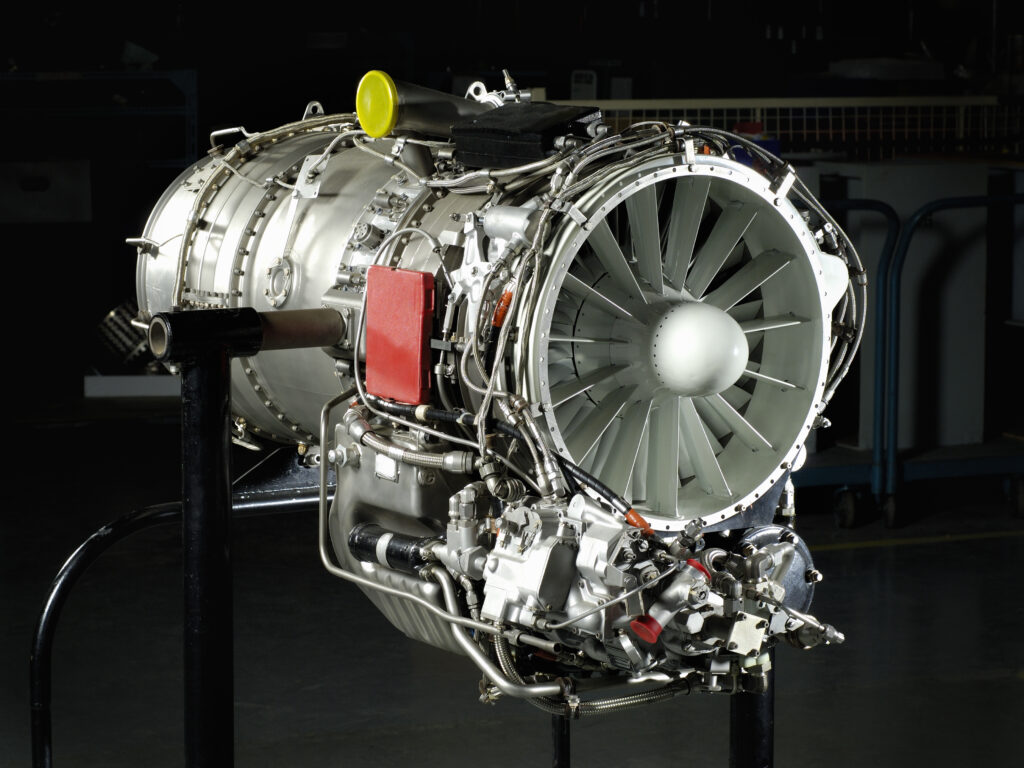Molybdenum: Properties, Applications, and Alloys
Curious about how Molybdenum is utilized across different industries? In this article, we delve into the various properties and applications of Molybdenum, with a special focus on the different types of alloys in which Molybdenum is employed. We’ll also shed light on why Molybdenum is used in various forms within vacuum furnaces.
What Is Molybdenum?
Molybdenum is a hard, shiny, silver-colored transition metal. Its chemical symbol is Mo, and it has an atomic number of 42. Molybdenum can be found in various minerals, including Ferrimolybdite, Molybdenite, Powellite, and Wulfenite. However, it is primarily extracted from Molybdenite and is obtained as a byproduct in the mining of Copper and Tungsten. Molybdenum is mainly mined in the United States, Canada, Chile, Peru, Mexico, Norway, and Germany. Interestingly, samples from the moon have also revealed the presence of Molybdenum.

Rebuilt, aircraft gas turbine engine on stand.
Properties and Applications of Molybdenum
In its pure form, Molybdenum boasts one of the highest melting points of all elements: 2623°C, surpassed only by Tungsten and Tantalum. Additionally, Molybdenum is exceptionally strong and corrosion-resistant. These characteristics make Molybdenum widely used in alloys, as well as in electrodes, heating elements, and components of rocket engines and rocket technology. Overall, Molybdenum is a highly versatile metal with a broad range of applications in various industries, including aerospace, defense, electronics, and energy production.
Molybdenum Alloys
Molybdenum plays an essential role in the production of many alloys. Adding Molybdenum to alloys enhances their strength, toughness, and corrosion resistance, making them suitable for a wide range of applications in various industries. Molybdenum is combined with other elements such as Tungsten, Nickel, Niobium, Zirconium, Vanadium, and Chromium to create these alloys.
Molybdenum TZM
Molybdenum TZM is an alloy composed of Titanium, Zirconium, and Molybdenum. This alloy is primarily valued for its superior strength. It also exhibits a higher recrystallization temperature, hardness, and good toughness. Molybdenum TZM retains the characteristic properties of Molybdenum, including its high melting point and corrosion resistance. Due to its strength, Molybdenum TZM finds extensive use in aerospace and aviation applications.
MoLa Alloy
MoLa is an alloy consisting of Molybdenum and Lanthanum. Lanthanum is a rare earth metal known for its ease of shaping. However, it easily oxidizes in air and water. The addition of Lanthanum to Molybdenum enhances ductility and, more importantly, increases the recrystallization temperature. As a result, MoLa can withstand higher temperatures without undergoing significant changes in its properties. This makes the alloy well-suited for use in high-temperature environments, such as aerospace and defense applications.
Molybdenum in Nickel Alloys
Molybdenum is also a crucial element in the production of Nickel-based alloys, which are used in a wide range of applications, including jet engines, nuclear reactors, and chemical processing plants. The addition of Molybdenum to Nickel-based alloys increases their strength, ductility, and corrosion resistance, making them ideal for use in harsh environments. Some of the Molybdenum-Nickel alloys we offer include:
- Inconel 718
- Inconel 625
- Hastelloy C-276
- Hastelloy C-22
Molybdenum in Vacuum Furnaces
A highly specific application of Molybdenum is in vacuum furnaces. Vacuum furnaces are industrial ovens where the atmosphere is controlled by a vacuum. These furnaces are used for various processing operations, where the combination of temperature and active substances in the vacuum determines the atmosphere and the treatment’s outcome.
Molybdenum is used in various compositions in the heating elements and beams of these furnaces because the material is highly corrosion-resistant at very high temperatures. This combination of properties is crucial in vacuum furnaces, as various treatments are carried out at extremely high temperatures, and the sterile, controlled atmosphere is critical for successful treatment. Materials in the furnace must not be affected by temperature and gases, as these could jeopardize the treatment.
Interested in the Benefits of Partnering with Metel?
Our team is ready to provide you with insights into our program, approach, and share successful collaborations with clients in your specific market. Schedule an appointment via 0416 – 724 800 or email n.kesteloo@metel.nl.